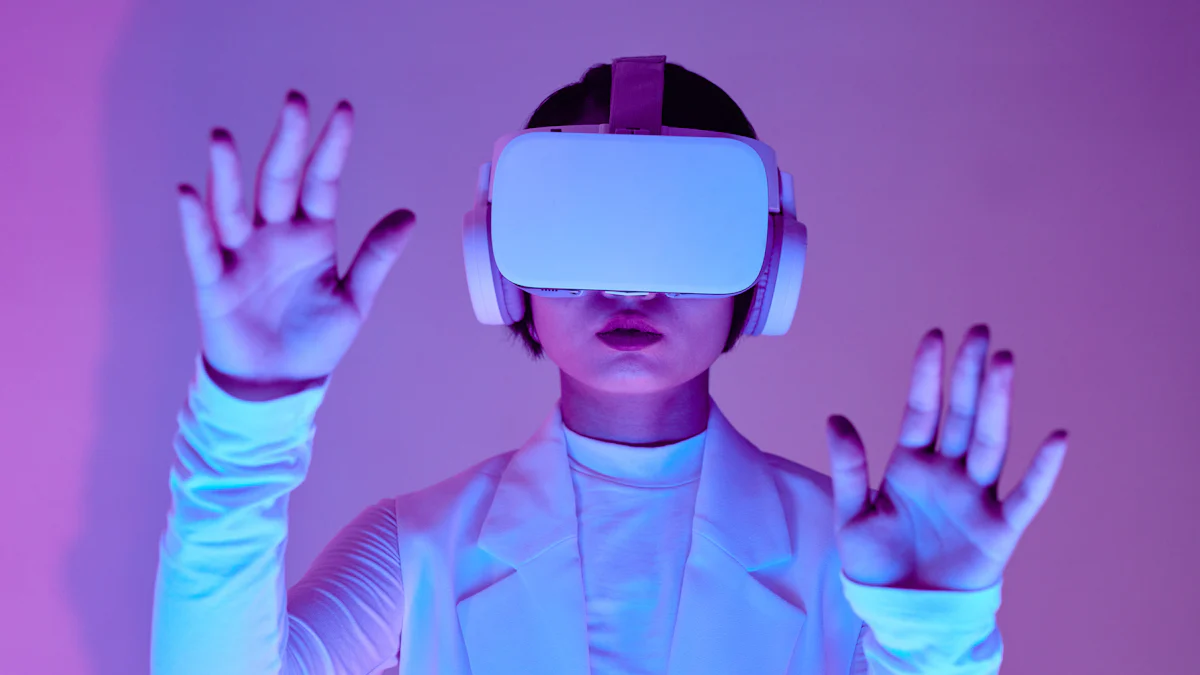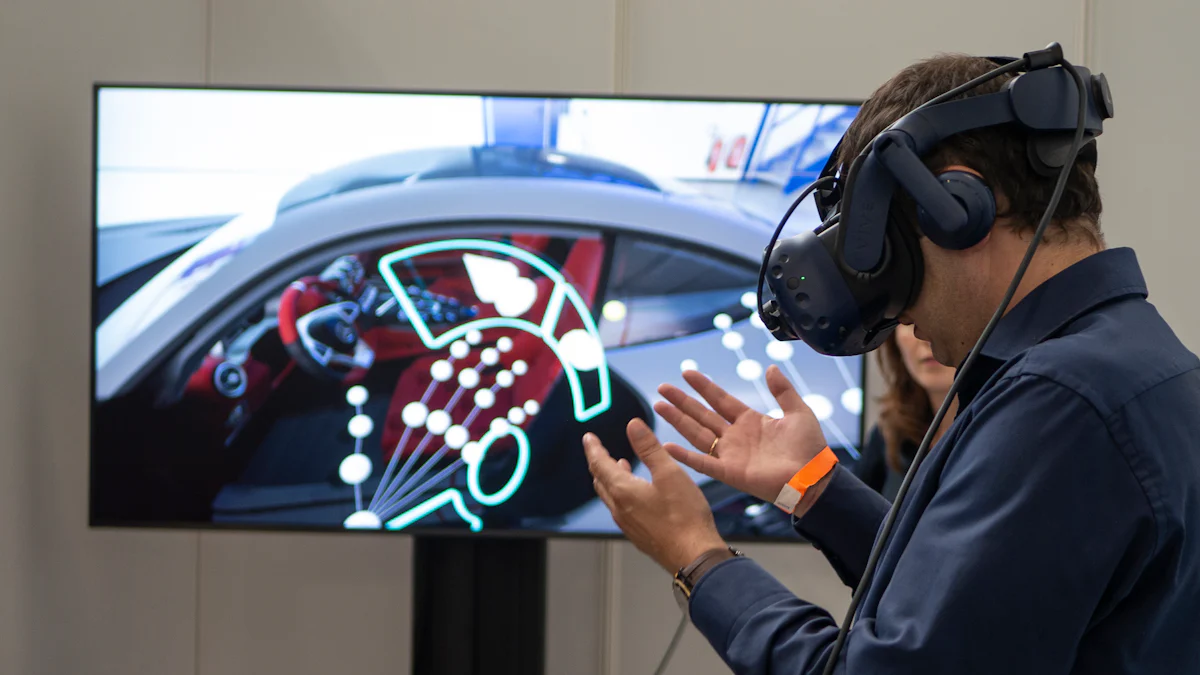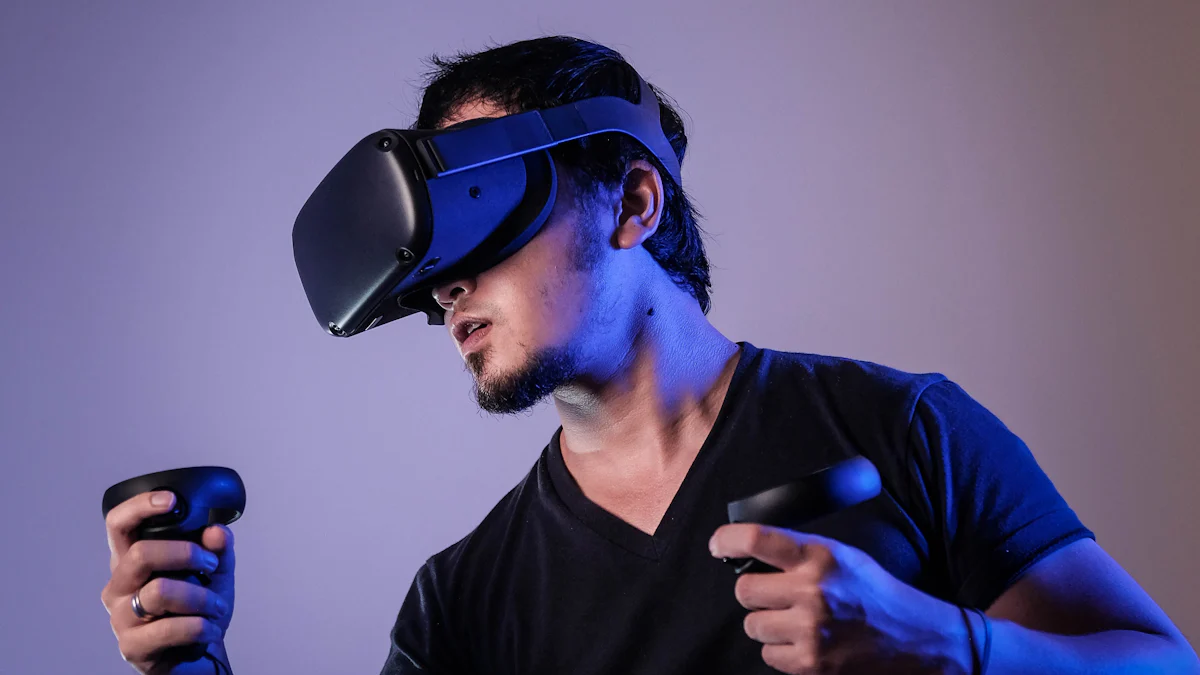The Role of Generative AI in Virtual Reality Experiences

Generative AI is transforming the landscape of virtual reality (VR) by offering innovative solutions that enhance user experiences. You can now explore vast, detailed virtual environments that adapt to your preferences and actions. This intersection of technologies holds immense promise for businesses and developers, unlocking new possibilities in content creation and user engagement. By leveraging Generative AI, VR experiences become more immersive and responsive, providing you with unique and personalized interactions. The potential of this synergy continues to grow, paving the way for groundbreaking advancements in modern technology.
Understanding Generative AI
Definition and Core Concepts
Generative AI represents a fascinating branch of artificial intelligence. It focuses on creating new content from existing data. You can think of it as a digital artist, crafting unique pieces based on learned patterns.
Machine Learning and Neural Networks
At the heart of generative AI lies machine learning. This technology enables computers to learn from data. Neural networks, a subset of machine learning, mimic the human brain's structure. They process information through interconnected nodes, allowing AI to generate complex outputs. You might encounter these networks in applications like image generation or language processing.
Types of Generative Models
Generative models come in various forms. Some popular types include:
Generative Adversarial Networks (GANs): These models pit two neural networks against each other. One generates content, while the other evaluates it. This competition results in highly realistic outputs.
Variational Autoencoders (VAEs): VAEs focus on encoding input data into a compressed form. They then decode it back into a new version, often with creative variations.
Historical Development
The journey of generative AI has been marked by significant milestones. Understanding its evolution helps you appreciate its current capabilities.
Early Innovations
In the early days, researchers experimented with basic algorithms. These initial efforts laid the groundwork for more sophisticated models. You might recall early computer-generated art or music as examples of these pioneering attempts.
Recent Advancements
Recent years have witnessed remarkable progress in generative AI. Advances in computational power and data availability have fueled this growth. Today, AI can create 3D models, dynamic narratives, and interactive characters. In virtual reality, these innovations enhance your experience by automating the creation of lifelike environments and characters. The integration of generative AI in VR has opened new avenues for storytelling and user engagement, making your interactions more immersive and personalized.
Overview of Virtual Reality
Definition and Core Concepts
Virtual reality (VR) immerses you in a computer-generated environment, making you feel as if you are part of a different world. This technology relies on both hardware and software to create these experiences.
VR Hardware and Software
VR hardware includes devices like headsets, gloves, and motion sensors. These tools track your movements and adjust the virtual environment accordingly. The software, on the other hand, generates the virtual worlds you explore. It processes data from the hardware to render realistic graphics and sounds, enhancing your sense of presence in the virtual space.
Immersive Experience Design
Designing immersive experiences involves creating environments that engage your senses. Developers focus on visual, auditory, and sometimes tactile elements to make the experience as lifelike as possible. By simulating real-world physics and interactions, VR can transport you to places you might never visit in reality.
Evolution of VR Technology
The journey of VR technology has been marked by significant milestones, each contributing to the immersive experiences you enjoy today.
From Simulations to Full Immersion
The concept of VR dates back to 1935 when Stanley Weinbaum introduced the idea in his story "Pygmalion’s Spectacles." This laid the foundation for future developments. In the 1960s, Morton Heilig created the Sensorama, a machine that combined multiple technologies to stimulate all your senses. This was one of the first attempts to create a fully immersive experience.
Key Milestones in VR Development
Several key events have shaped the development of VR. In 1968, Ivan Sutherland and Bob Sproull developed the first VR headset, known as The Sword of Damocles. This device connected to a computer and represented a significant leap forward in VR technology. Over the years, advancements in computing power and graphics have allowed VR to evolve from simple simulations to fully immersive experiences. Today, VR continues to push boundaries, offering you new ways to interact with digital worlds.
Integration of Generative AI in VR

Generative AI is reshaping the landscape of virtual reality by enhancing realism and personalization. This integration allows you to experience virtual worlds that feel more authentic and tailored to your preferences. Let's explore how Generative AI contributes to these advancements.
Enhancing Realism and Immersion
AI-Generated Environments
Generative AI plays a crucial role in creating detailed and lifelike virtual environments. By analyzing vast datasets, AI can generate complex textures, objects, and landscapes that mimic the real world. This technology allows you to explore virtual spaces that are not only visually stunning but also rich in detail. For instance, in the field of quantum optics, AI models have revolutionized scientific discovery by visualizing complex phenomena in VR environments. These AI-generated environments unlock new avenues of exploration, making scientific concepts more accessible and engaging.
Dynamic Content Creation
Generative AI enables the creation of dynamic content that adapts to your interactions. As you navigate through a virtual world, AI can generate new elements in real-time, ensuring that each experience is unique. This capability enhances immersion by providing a responsive environment that evolves based on your actions. Whether it's generating new storylines or adjusting the virtual landscape, dynamic content creation keeps you engaged and invested in the experience.
Personalization and User Experience
Adaptive User Interfaces
Generative AI enhances user experience by creating adaptive interfaces that respond to your preferences and behavior. These interfaces adjust in real-time, offering a seamless interaction with the virtual world. For example, if you prefer a minimalist design, the AI can modify the interface to reduce clutter and focus on essential elements. This adaptability ensures that you have a comfortable and intuitive experience, tailored to your needs.
Tailored Content Delivery
Generative AI excels in delivering personalized content that aligns with your interests. By analyzing your past interactions and preferences, AI can curate content that resonates with you. This tailored approach enhances engagement by presenting you with experiences that are relevant and meaningful. Whether it's recommending new virtual environments to explore or customizing storylines, tailored content delivery ensures that your VR experience is both enjoyable and personalized.
Applications of Generative AI in VR

Generative AI is revolutionizing virtual reality by offering innovative applications across various domains. You can experience its transformative impact in gaming, entertainment, education, and training. Let's delve into how Generative AI enhances these areas.
Gaming and Entertainment
Procedural Content Generation
In gaming, Generative AI empowers developers to create vast and diverse worlds. You encounter environments that evolve and adapt, providing endless exploration opportunities. Procedural content generation allows games to generate landscapes, levels, and scenarios dynamically. This approach ensures that each playthrough offers a unique experience, keeping you engaged and intrigued. By leveraging AI, developers can craft intricate worlds without manually designing every detail, enhancing both creativity and efficiency.
Interactive Storytelling
Generative AI also plays a pivotal role in interactive storytelling. You become part of narratives that respond to your choices and actions. AI-driven characters and plotlines adapt in real-time, creating a personalized journey. This dynamic storytelling approach immerses you in the game world, making your decisions impactful. As a result, you enjoy a more engaging and emotionally resonant experience. The ability to tailor stories to individual players sets a new standard for narrative-driven games.
Education and Training
Simulated Learning Environments
In education, Generative AI facilitates the creation of simulated learning environments. You can explore complex concepts through immersive simulations that mimic real-world scenarios. These environments offer hands-on experiences, allowing you to practice skills in a safe and controlled setting. For instance, medical students can perform virtual surgeries, gaining valuable experience without risk. By providing realistic simulations, Generative AI enhances learning outcomes and prepares you for real-life challenges.
Real-Time Feedback and Assessment
Generative AI also enhances training by offering real-time feedback and assessment. As you engage with virtual training modules, AI analyzes your performance and provides instant feedback. This immediate response helps you identify areas for improvement and adjust your approach accordingly. In fields like aviation or engineering, real-time assessment ensures that you master critical skills efficiently. By integrating AI-driven feedback, training programs become more effective and tailored to your needs.
Future Trends and Challenges
As you explore the future of virtual reality, Generative AI stands at the forefront of innovation. This technology promises to revolutionize how you interact with digital environments. However, it also presents challenges that require careful consideration.
Emerging Technologies
AI-Driven VR Innovations
Generative AI continues to drive advancements in virtual reality. You can expect more sophisticated AI-driven VR innovations that enhance realism and interactivity. These technologies will allow you to experience virtual worlds that adapt seamlessly to your actions and preferences. AI-generated environments will become more detailed and lifelike, offering you an unparalleled level of immersion. As these innovations evolve, they will redefine your expectations of what virtual reality can achieve.
Cross-Platform Integration
Cross-platform integration is another trend shaping the future of VR. You will soon be able to access VR experiences across multiple devices and platforms. This integration will ensure that your virtual interactions remain consistent, regardless of the hardware you use. By leveraging Generative AI, developers can create content that adapts to different platforms, providing you with a seamless experience. This trend will make VR more accessible and versatile, allowing you to explore virtual worlds from anywhere.
Ethical and Technical Challenges
Data Privacy Concerns
As Generative AI becomes more prevalent in VR, data privacy concerns will need to be addressed. You must consider how your personal information is collected, stored, and used within virtual environments. Developers must prioritize ethical conduct and ensure that your data remains secure. By implementing robust privacy measures, they can protect your digital rights and personal freedoms. Addressing these concerns will be crucial to maintaining trust and ensuring a positive VR experience.
Balancing Creativity and Control
Balancing creativity and control presents another challenge in the realm of Generative AI. You may wonder how much control you have over AI-generated content. Developers must find a balance between allowing AI to innovate and ensuring that you retain agency over your virtual experiences. This balance will involve addressing issues such as ownership of AI-generated content and potential biases in AI-driven narratives. By fostering responsible use of technology, developers can create a more inclusive and engaging Metaverse for you to explore.
Generative AI is transforming virtual reality by offering innovative solutions that enhance your experiences. It creates dynamic narratives, interactive characters, and realistic soundscapes, making VR more immersive and personalized. As you look to the future, ongoing research promises extraordinary advancements in VR technology. This synergy will unlock new possibilities in content creation and user engagement. Continued innovation remains crucial. By embracing these advancements, you can expect VR experiences that are not only more engaging but also tailored to your preferences, ensuring a future where technology and creativity thrive together.
See Also
The Impact of Generative AI on Artistic Revolution
The Essence of Generative AI Creation
Neural Networks' Contribution to Generative AI
The Future of Creativity and Innovation with Generative AI
Exploring the Evolution of Generative AI: Concept to Actualization
